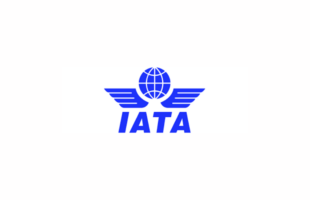
The latest data from the International Air Transport Association (IATA) shows a further slowdown in global air freight demand in June. Air freight volumes measured in freight tonne kilometers (FTK) rose just 1.2 per cent compared to a year ago. This is consistent with falling trade activity and weaker than expected global growth.
Regional performance varied widely. Asia-Pacific, North American and Latin American carriers reported year-on-year declines (-0.3, -3.3, and -1.6 per cent respectively) while European carriers reported that markets were flat. This was offset by the strong performance of Middle Eastern (+15.3 per cent) and African (+6.7 per cent) carriers to keep growth in positive territory.
The general trend of a weaker 2015 compared to 2014 can be seen in the half-year data. Air freight markets expanded by 5.8 per cent in 2014; however year-to-date growth for 2015 stands at 3.5 per cent.
“The half-year report for air cargo is not encouraging,” said Tony Tyler, IATA’s director general and CEO. “With growth of just 1.2 per cent over June last year, markets are basically stagnating. Some carriers are doing better than others at picking up the business that is out there. But overall it has been a disappointing first half of 2015, especially considering the strong finish to 2014.

“The remainder of the year holds mixed signals. The general expectation is for an acceleration of economic growth, but business confidence and export orders look weak. Air cargo and the global economy will all benefit if governments can successfully focus on stabilising growth and stimulating trade by removing barriers.”
Regional perspectives
- Asia-Pacific carriers saw a fall in FTKs of 0.3 per cent in June compared to June 2014, and capacity expanded four per cent. The region has experienced a notable slowdown in imports and exports over recent months, and latest data shows emerging Asia trade activity down eight per cent. Growth for the year-to-date was 5.4 per cent. In addition to generally weak trade growth, the region is the most exposed to the China market where government policies are more focused on stimulating domestic markets.
- European carriers reported flat demand in June, compared to a year ago and capacity rose 2.2 per cent. Improvements in Eurozone business confidence have not led to increased air freight demand, and consumer confidence has been hit by the Greek crisis. Growth for the year-to-date was -0.6 per cent.
- North American airlines experienced a decline of 3.3 per cent year-on-year and capacity grew 2.8 per cent. The positive impact of a modal shift to air as a result of the West Coast ports strike has faded and economic performance, despite some improvement in the second quarter, is subdued. Growth for the first six months of the year was -0.4 per cent.
- Middle Eastern carriers saw the strongest growth with demand expanding by 15.3 per cent, and capacity rose 19.2 per cent. Airlines in the region have pursued a successful hub strategy connecting both long- and short-haul markets. Although some major economies in the region have seen slowdowns in non-oil sectors, economic growth remains generally robust, which is also helping to sustain demand for air freight. Growth for the year-to-date is running at 14 per cent.
- Latin American airlines reported a fall in demand of 1.6 per cent year-on-year, and capacity expanded 3.7 per cent. Regional trade activity has grown in the first half of 2015, despite continuing weakness in Brazil and Argentina. Unfortunately this has not translated into stronger demand for air freight. Growth for the year-to-date was -6.9 per cent.
- African carriers experienced growth in demand of 6.7 per cent, and capacity rose by the same amount. The Nigerian and South African economies have underperformed for much of the year so far, however regional trade has held up. Demand growth for the first six months was 4.8 per cent.






